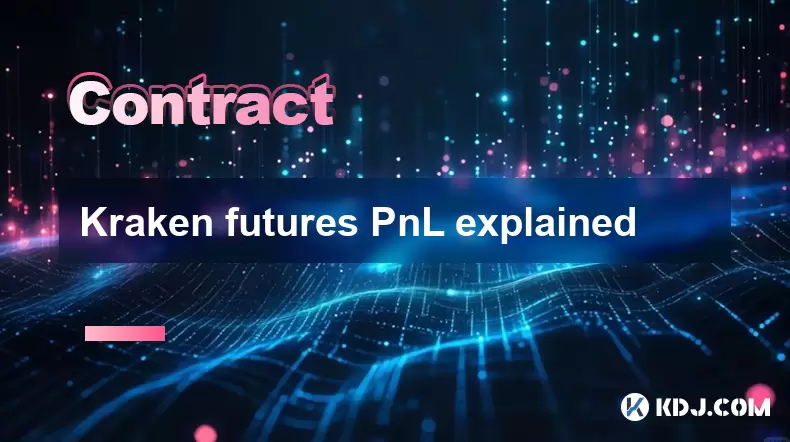-
 Bitcoin
Bitcoin $117700
-0.03% -
 Ethereum
Ethereum $3805
0.49% -
 XRP
XRP $3.098
-1.00% -
 Tether USDt
Tether USDt $1.000
0.03% -
 BNB
BNB $792.8
-1.72% -
 Solana
Solana $177.9
-1.95% -
 USDC
USDC $1.000
0.02% -
 Dogecoin
Dogecoin $0.2202
-1.55% -
 TRON
TRON $0.3278
-2.92% -
 Cardano
Cardano $0.7641
-2.43% -
 Hyperliquid
Hyperliquid $42.21
-2.68% -
 Sui
Sui $3.758
-1.58% -
 Stellar
Stellar $0.4080
-3.21% -
 Chainlink
Chainlink $17.75
-0.33% -
 Bitcoin Cash
Bitcoin Cash $591.8
4.96% -
 Hedera
Hedera $0.2561
-3.09% -
 Avalanche
Avalanche $23.34
-4.24% -
 Litecoin
Litecoin $110.7
1.96% -
 UNUS SED LEO
UNUS SED LEO $8.956
-0.01% -
 Toncoin
Toncoin $3.410
0.79% -
 Ethena USDe
Ethena USDe $1.001
0.03% -
 Shiba Inu
Shiba Inu $0.00001288
-1.82% -
 Uniswap
Uniswap $10.07
-2.06% -
 Polkadot
Polkadot $3.807
-2.27% -
 Monero
Monero $308.2
-2.15% -
 Dai
Dai $1.000
0.03% -
 Bitget Token
Bitget Token $4.521
-0.30% -
 Pepe
Pepe $0.00001134
-1.52% -
 Cronos
Cronos $0.1457
0.65% -
 Aave
Aave $274.9
-2.47%
Kraken futures PnL explained
Kraken futures let traders bet on crypto prices without owning assets, with PnL calculated based on entry, mark, and exit prices—plus fees and funding rates—affecting profits or losses.
Jul 30, 2025 at 07:07 am

Understanding Kraken Futures and Their Role in Cryptocurrency Trading
Kraken futures are derivative contracts offered by the Kraken exchange that allow traders to speculate on the future price of cryptocurrencies such as Bitcoin (BTC), Ethereum (ETH), and other supported digital assets. These futures enable users to take either a long or short position without owning the underlying asset. The core mechanism revolves around agreeing on a price today for settlement at a later date. This financial instrument is widely used for hedging risk, leveraging positions, and capitalizing on market volatility.
When engaging in Kraken futures trading, every position carries an associated profit and loss (PnL) metric. PnL reflects the net gain or loss from open or closed positions based on changes in the contract's market value. It is calculated differently depending on whether the position is still open (unrealized PnL) or has been closed (realized PnL). Understanding how these values are derived is crucial for managing risk and optimizing strategy.
Unrealized vs Realized Profit and Loss (PnL)
The distinction between unrealized PnL and realized PnL is fundamental when evaluating performance on Kraken futures.
- Unrealized PnL represents the current profit or loss of an open position. It fluctuates with market prices and is not locked in until the position is closed.
- Realized PnL is the actual profit or loss recorded after closing a trade. This value becomes permanent and contributes directly to your account balance.
For example, if you enter a long position on a BTC/USD futures contract at $30,000 and the current mark price rises to $32,000, your unrealized PnL will reflect the gain based on your position size and leverage. Once you exit the trade at $32,000, that gain becomes realized. Conversely, closing below $30,000 results in a realized loss.
Kraken uses the mark price, not the last traded price, to calculate unrealized PnL. This prevents manipulation and ensures fairness by referencing a fair value derived from spot indices and funding rates.
How Unrealized PnL Is Calculated on Kraken Futures
The formula for unrealized PnL varies slightly depending on whether the contract is inverse or linear. Kraken supports both types, and understanding their differences is essential.
For inverse futures (denominated in cryptocurrency):
- Unrealized PnL (in base currency) = Position Size × [(1 / Entry Price) − (1 / Mark Price)]
This result is in the base asset (e.g., BTC). To convert it to USD, multiply by the current BTC/USD price.
For linear futures (denominated in USD):
- Unrealized PnL (in USD) = Position Size × (Mark Price − Entry Price)
In this case, the PnL is already in fiat terms. For instance, holding a 1-contract long position in ETH/USD linear futures at $2,000 with a mark price of $2,100 yields an unrealized PnL of $100 per contract.
It’s important to note that funding payments also affect unrealized PnL over time. These periodic transfers between longs and shorts occur every 8 hours and are based on the difference between the futures price and the spot index. Positive funding rates mean longs pay shorts, reducing long positions’ unrealized gains.
Calculating Realized PnL After Closing a Position
Once a futures position is closed, realized PnL is computed based on the entry and exit prices, adjusted for fees and funding.
For inverse contracts:
- Realized PnL (in base coin) = Position Size × [(1 / Entry Price) − (1 / Exit Price)]
- Subtract taker/maker fees in the base currency
- Account for net funding payments received or paid during the trade
For linear contracts:
- Realized PnL (in USD) = Position Size × (Exit Price − Entry Price)
- Deduct trading fees in USD
- Include any funding costs or receipts
Suppose you open a 10,000 USD long position in BTC/USD inverse futures at $30,000 and close at $33,000. Your gross PnL is:
- 10,000 × [(1/30,000) − (1/33,000)] = 0.0303 BTC
- Convert to USD: 0.0303 × 33,000 ≈ $1,000
After deducting a 0.05% taker fee ($5) and any funding outflows, the final realized PnL adjusts accordingly.
Kraken displays all these components in the trade history and PnL ledger, accessible under the futures dashboard.
Viewing and Interpreting PnL Data on the Kraken Interface
Accessing PnL information on Kraken requires navigating specific sections of the futures trading interface.
- Log in to your Kraken account and switch to the futures trading view
- Locate the Positions tab to see active trades with real-time unrealized PnL
- Check the PnL & Fees tab for a detailed breakdown of realized gains and losses
- Use the Funding History section to review periodic payments affecting PnL
- Export data via API or CSV reports for external analysis
Each row in the PnL ledger includes:
- Trade ID
- Instrument (e.g., BTC/USD)
- Side (buy/sell)
- Entry and exit prices
- Position size
- Realized PnL amount
- Fee deductions
- Net funding impact
Traders can filter by date range, symbol, or PnL type. The platform supports both cross-margin and isolated-margin modes, which influence liquidation thresholds but not PnL calculation logic.
Common Factors That Influence Futures PnL Accuracy
Several variables can impact the precision and perception of PnL on Kraken futures.
- Mark price divergence: Sudden spikes or gaps in spot markets may cause temporary misalignment between mark and last prices.
- Funding rate volatility: High positive or negative funding can erode profits, especially in prolonged positions.
- Fee structure: Taker fees (0.02–0.05%) and maker rebates (−0.01% to 0.02%) alter net outcomes.
- Leverage usage: While leverage amplifies returns, it also magnifies losses and increases margin requirements.
- Liquidation events: If a position is liquidated, realized PnL reflects the forced exit price, often unfavorable.
Monitoring the liquidation price and margin utilization helps avoid premature closures. Kraken provides alerts and margin call notifications to assist in risk management.
Frequently Asked Questions
Q: Does Kraken include funding payments in the displayed unrealized PnL?
Yes, funding payments are factored into unrealized PnL over time. The system automatically adjusts the position value every 8 hours when funding is exchanged. Long positions lose value when paying funding; shorts gain in such cases.
Q: Can I export my complete futures PnL history from Kraken?
Absolutely. Navigate to Reports > Futures PnL and select the desired date range. Click Export CSV to download a file containing all realized trades, fees, funding, and net PnL. API users can retrieve this data using the GetLedgers endpoint with asset=future.
Q: Why does my unrealized PnL change even when the market price doesn’t move?
This can occur due to funding rate accrual. Even in stagnant markets, funding is calculated and applied periodically. Additionally, the mark price may adjust based on the underlying spot index, causing minor fluctuations.
Q: How does Kraken handle PnL for partial position closures?
When closing part of a position, Kraken uses the first-in, first-out (FIFO) method. The earliest opened portion of the position is closed first. Unrealized PnL updates for the remaining quantity, and realized PnL is calculated based on the exit price of the partial amount.
Disclaimer:info@kdj.com
The information provided is not trading advice. kdj.com does not assume any responsibility for any investments made based on the information provided in this article. Cryptocurrencies are highly volatile and it is highly recommended that you invest with caution after thorough research!
If you believe that the content used on this website infringes your copyright, please contact us immediately (info@kdj.com) and we will delete it promptly.
- Retail, Crypto, Visibility: Decoding the Signals in Today's Market
- 2025-07-31 12:31:08
- Bitcoin, Altcoin Selloff, and the FOMC Decision: A Crypto Market Rollercoaster
- 2025-07-31 12:35:33
- Cold Wallet vs. MetaMask: A Crypto Wallet Revolution?
- 2025-07-31 10:30:57
- Bitcoin Casinos in 2025: Instant Payouts and Welcome Bonuses
- 2025-07-31 10:50:33
- Meme Coins in 2025: Token Burns and the Quest for Moonshots
- 2025-07-31 10:50:33
- Unlocking Value: A Deep Dive into Random Year 1 oz Krugerrand Gold Coins
- 2025-07-31 10:57:21
Related knowledge

Why is my Bitstamp futures position being liquidated?
Jul 23,2025 at 11:08am
Understanding Futures Liquidation on BitstampFutures trading on Bitstamp involves borrowing funds to open leveraged positions, which amplifies both po...

How to report Bitstamp futures for taxes?
Jul 30,2025 at 08:35am
Understanding Bitstamp Futures and Taxable EventsWhen trading Bitstamp futures, it’s essential to recognize that these financial instruments are treat...

Does Bitstamp offer inverse contracts?
Jul 23,2025 at 01:28pm
Understanding Inverse Contracts in Cryptocurrency TradingIn the realm of cryptocurrency derivatives, inverse contracts are a specific type of futures ...

What is the difference between futures and perpetuals on Bitstamp?
Jul 27,2025 at 05:08am
Understanding Futures Contracts on BitstampFutures contracts on Bitstamp are financial derivatives that allow traders to speculate on the future price...

How to find your Bitstamp futures trade history?
Jul 23,2025 at 08:07am
Understanding Bitstamp and Futures Trading AvailabilityAs of the current state of Bitstamp’s service offerings, it is critical to clarify that Bitstam...

Can I use a trailing stop on Bitstamp futures?
Jul 23,2025 at 01:42pm
Understanding Trailing Stops in Cryptocurrency TradingA trailing stop is a dynamic type of stop-loss order that adjusts automatically as the price of ...

Why is my Bitstamp futures position being liquidated?
Jul 23,2025 at 11:08am
Understanding Futures Liquidation on BitstampFutures trading on Bitstamp involves borrowing funds to open leveraged positions, which amplifies both po...

How to report Bitstamp futures for taxes?
Jul 30,2025 at 08:35am
Understanding Bitstamp Futures and Taxable EventsWhen trading Bitstamp futures, it’s essential to recognize that these financial instruments are treat...

Does Bitstamp offer inverse contracts?
Jul 23,2025 at 01:28pm
Understanding Inverse Contracts in Cryptocurrency TradingIn the realm of cryptocurrency derivatives, inverse contracts are a specific type of futures ...

What is the difference between futures and perpetuals on Bitstamp?
Jul 27,2025 at 05:08am
Understanding Futures Contracts on BitstampFutures contracts on Bitstamp are financial derivatives that allow traders to speculate on the future price...

How to find your Bitstamp futures trade history?
Jul 23,2025 at 08:07am
Understanding Bitstamp and Futures Trading AvailabilityAs of the current state of Bitstamp’s service offerings, it is critical to clarify that Bitstam...

Can I use a trailing stop on Bitstamp futures?
Jul 23,2025 at 01:42pm
Understanding Trailing Stops in Cryptocurrency TradingA trailing stop is a dynamic type of stop-loss order that adjusts automatically as the price of ...
See all articles

























































































